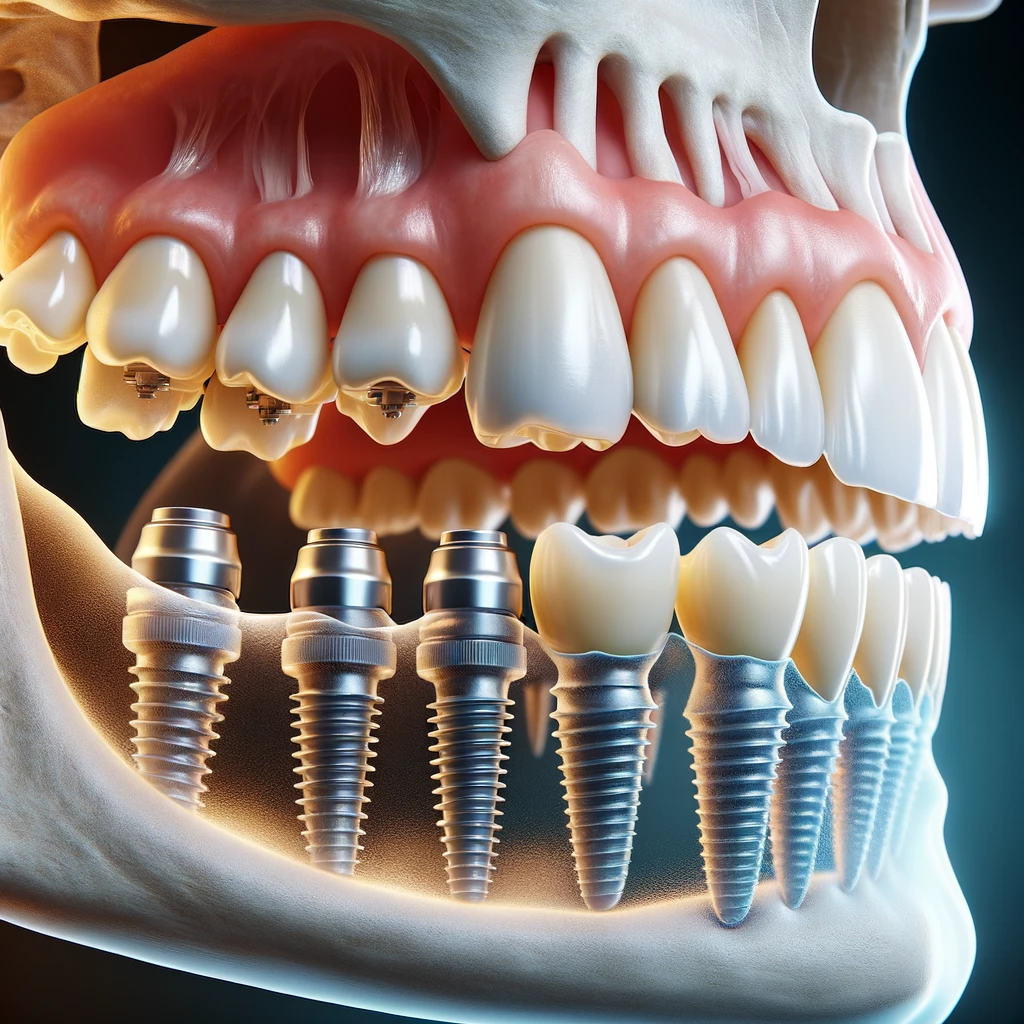4 Simple Techniques For Dental Sense
4 Simple Techniques For Dental Sense
Blog Article
Indicators on Dental Sense You Should Know
Table of ContentsSome Known Facts About Dental Sense.How Dental Sense can Save You Time, Stress, and Money.What Does Dental Sense Mean?Things about Dental Sense
are medical devices surgically implanted right into the jaw to bring back a person's capacity to eat or their appearance. They give assistance for man-made (fake) teeth, such as crowns, bridges, or dentures. When a tooth is shed as a result of injury or illness, a person can experience complications such as rapid bone loss, malfunctioning speech, or modifications to chewing patterns that cause discomfort.Oral dental implant systems consist of an oral implant body and dental implant joint and may additionally include a joint addiction screw. Cosmetic dentistry services. The dental implant body is surgically placed in the jawbone instead of the tooth's origin. The dental implant joint is generally connected to the implant body by the abutment addiction screw and prolongs via gums right into the mouth to sustain the connected synthetic teeth
(https://dentalsense1.weebly.com/)Framework of The Dental Implant System selecting dental implants, talk to your oral copyright concerning the prospective benefits and risks, and whether you are a candidate for the treatment. Things to consider: Your total wellness is a crucial consider identifying whether you are a good prospect for dental implants, the length of time it will certainly take to heal, and for how long the dental implant might remain in place.
Smoking cigarettes might impact the healing procedure and decrease the lasting success of the implant. The recovery process for the dental implant body may take numerous months or longer, during which time you generally have a temporary joint in place of the tooth. the oral implant procedure: Meticulously comply with the oral health directions offered to you by your dental copyright.
Our Dental Sense Ideas
Implant failure can lead to the demand for one more surgery to fix or replace the implant system. Recovers the ability to eat Restores cosmetic look Aids maintain the jawbone from shrinking due to bone loss Protects the wellness of the bordering bone and gum tissues Helps keep nearby (close-by) teeth secure Enhances top quality of life Damage to surrounding natural teeth during implant placement Injury to the surrounding tissues during surgical procedure, such as sinus opening Injury during surgery (as an example, fracture of surrounding jawbone) Insufficient function, such as feeling like the teeth do not bite together normally A sensation that the tooth is loose or turning in position resulting from an abutment screw loosening Implant body failing (looseness of the implant body) like this as a result of systemic infection, which might be more most likely in people with unchecked diabetes mellitus as a result of neighborhood infection in bone and gum tissues sustaining the dental implant body because of delayed recovery, which might be most likely in individuals that smoke Problem cleaning the gum tissues around the dental implant, leading to bad oral health Without treatment periodontal disease Post-surgical feeling numb as a result of nerve impingement or damage Constantly inform healthcare service providers and imaging technicians that you have oral implants prior to any magnetic vibration imaging (MRI) or x-ray treatments.
FDA is not knowledgeable about any damaging events reported for MRI or x-ray procedures with oral implants. Dental implants systems are generally constructed from products that follow global consensus criteria of the International Organization for Standardization (ISO) or ASTM International. These standards have information of what makes a safe product.

A dental implant is a framework that changes a missing out on tooth. With screw-like tools, the cosmetic surgeon inserts an implant right into the jawbone, and it works as a support for an artificial tooth, called a crown. A gadget called an abutment attaches the fabricated tooth to the oral implant. The crown is personalized to fit the person's mouth and match the color of their teeth.
More About Dental Sense
Some individuals are not qualified for dental implant surgical treatment. It is for dental surgeons to operate people with: acute illnessuncontrollable metabolic diseasebone or soft cells condition or infectionIf these problems are fixed, a person can have the surgical procedure. In, oral specialists abstain from running on people with: If people with any one of the above undertake dental implant surgery, there is a greater threat of the implant failing.

Dental implant surgical treatment is a personalized process. It's not the same for everybody. The complying with provides a general review of what you can anticipate your dental practitioner, dental surgeon, periodontist or prosthodontist to do: Place the implant operatively. Provide you time to heal. Connect the blog post and last crown, bridge or denture.
Next, your cosmetic surgeon will thoroughly place the oral implant right into your jaw. Your surgeon will certainly rearrange your periodontals and close the incision with stitches. If your dental implant is near the front of your mouth, your dental practitioner will certainly make a temporary tooth for you to put on up until you heal. By doing this, you will not have a gap in your smile while you recover.
The 9-Second Trick For Dental Sense
During the healing stage, your jawbone needs to fuse to the dental implant. This process can take anywhere from 3 to 9 months.
As soon as your implant heals, your dental expert can affix the joint (little adapter blog post) and your last remediation (crown, bridge or denture). This typically takes about one hour to finish and might require a 2nd small surgical procedure. You shouldn't feel any kind of discomfort during your oral implant procedure since your copyright will make use of medication to numb your periodontals.
Report this page